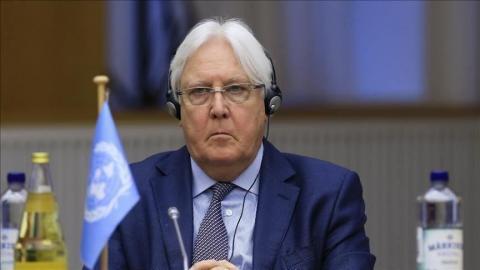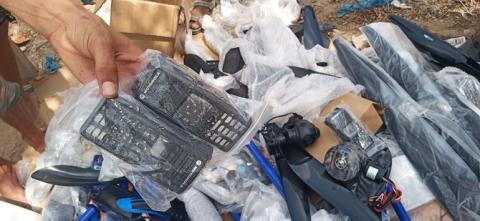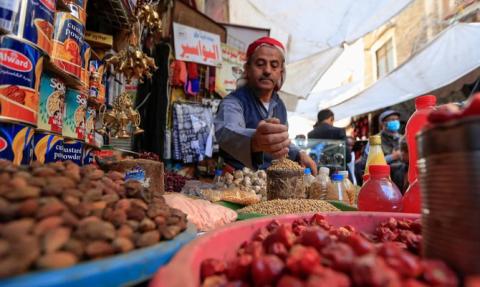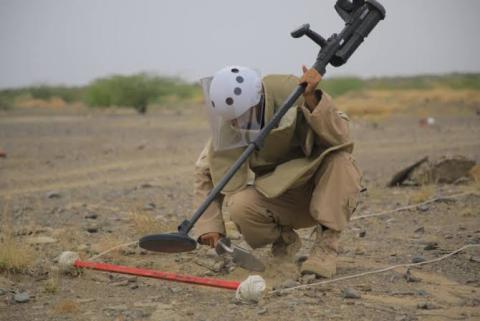In the rubble of Taiz, all roads to a normal life are blocked


In a conflict often called the “forgotten war”, one Yemeni city feels most forgotten of all.
“I want the whole world to know about Taiz,” declares Mohammed Saleh al-Qaisi. “I want them to see what Taiz was, and what’s happening now.” We’re sitting on a step on a street buzzing with motorcycles and the tinkle of bicycle bells. A few shops away, young men drinking hot sweet tea cradle rifles in their laps and wave at passersby. Above them, a billboard advertises books from Cambridge University Press and McGraw-Hill.
Yemen’s third-largest city was once known as its capital of culture. Taizis prided themselves on producing the best-educated people who became the best teachers, lawyers, pilots, you name it. Now it is known as Yemen’s longest-running battlefield, the most heavily bombed by blistering Saudi airstrikes, the deadliest governorate in Yemen’s devastating war. The conflict, which enters its sixth year this month, pits the Houthis aligned to Iran against Yemen’s government backed by a Saudi-led coalition supported by western military powers.
And Taiz has had its own combustible mix of infighting among rival groups armed by the coalition, including political Islamists and hardline Salafists comprising gunmen accused of links to al-Qaida.
“I know what this city was. I know what I went to school for,” Qaisi says, his eyes watering.
Attention to Taiz’s plight has been eclipsed by alarm over the fate of more strategic battlefields, including the contested Red Sea port city of Hodeida. The last major effort to push Yemen away from war in December 2018, in UN-brokered negotiations outside Stockholm, only reached an “understanding” on the need to talk about Taiz. It didn’t go any further.
And adding Taiz to Yemen’s long shopping list has made it even harder. “Now its fate is linked to a much bigger picture in a three-dimensional chess game,” says Peter Salisbury of the International Crisis Group.
In recent weeks, after one of the quietest periods in this war, there’s been an upsurge in fighting on key frontlines across Yemen.
Taiz is a city split in two, an ugly emblem of the wider conflict tearing a whole country apart. From the top of Jabal Sabir, the city’s towering mountain, inside the hollow pockmarked shell of what was once a prized tourist resort, there’s a dazzling view. A vista that once drew visitors now provides the best vantage point to understand Taiz’s political topography.
The frontline slashes through the city from east to west, leaving a visible green and brown scar. Greenery has spread like tentacles across the no man’s land. Beyond this line, about a third of Taiz is in the hands of Houthis who control the heights overlooking the northern edge of the city. The rest is run by the government. Close up, it’s a seam crackling with tension.
After securing permission from the head of a neighbourhood committee on the government side, whose members identify themselves as the “resistance”, we descend winding steps, sheltered by dark shadows and stone walls riddled with bullet holes, to a largely deserted lane.
“My family is hiding at home,” one of our escorts, in a Yemeni patterned turban and traditional “futa” skirt, says as we hang back a bit from the open street. “Whoever goes out gets shot by the Houthis.”
Families are caught in the crosshairs of both sides. War bestowed a new title on Taiz: “city of snipers”.
From where we stand, we see how life has been pulled from homes facing the line of fire. Building facades are like mournful faces of black-eyed windows and gaping holes.
Another man hurries past. “There’s only one street between my home and the Houthis,” he says, pointing the other way as he catches his breath. “My family was so scared they left.”
Beyond this alley, daily life is a battle. All roads in and out of Taiz, except one, are controlled by the Houthis.
“We were invited to cross to the other side for talks but clashes broke out and both sides shot at us,” recalls Abdul Kareen Shaiban with a grimace as he remembers a negotiating effort years ago. An MP who chairs a roads committee, he’s talked many times over many years to both sides.
We’re standing on what was once a bustling main road running though Taiz, which connected it to other major cities including the capital Sana’a in the north. A few goats pick their way down the carriageway and a little boy furiously pedals past on his beat-up bicycle. We can see the rusted metal barriers overgrown with shrubbery blocking the road a short distance away. “People inside this city have nothing to do with politics or war. They just simply want to live and they need a road,” Shaiban says.
“The siege has made life difficult and deadly,” chimes in Dalia Nasr of another initiative, Taizi Women for Life. She knows the danger – a sniper’s bullet blinded her in one eye. Her aunt, two brothers and a nephew were killed during clashes.

Yemeni officials on Monday condemned arrests and prosecutions by the Iran-backed Houthi militia directed against media, journalists and celebrities…

Yemen's warring parties are gearing up for new waves of conflict in 2023 amid a lack of decisive steps towards sustainable peace, adding to the suf…

The UAE will help to recruit doctors and deliver crucial supplies for hospitals in Yemen under a major healthcare drive. The Khalifa bin…